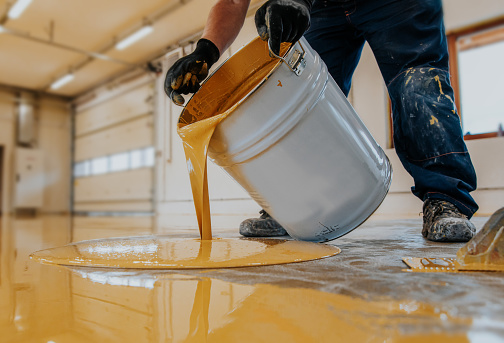Understanding Electrocoat Stripper and Parts Stripping: A Comprehensive Guide

When it comes to maintaining and restoring industrial parts, electrocoat stripper and parts stripping play crucial roles. These processes are essential for ensuring that components are free from coatings, contaminants, and residues, which is vital for both repair and preparation for new coatings. In this article, we will delve into what an electrocoat stripper is, how it works, and the importance of parts stripping in various industries.
What is an Electrocoat Stripper?
An electrocoat stripper is a chemical solution specifically designed to remove electrocoating (e-coat) layers from metal surfaces. Electrocoating is a process where a part is dipped into a water-based paint and then subjected to an electric current, causing the paint to adhere to the surface. This method is widely used for its durability and corrosion resistance, making it popular in the automotive and industrial sectors.
However, there are times when parts need to be recoated, repaired, or repurposed. In such cases, the existing e-coat layer must be removed, which is where the electrocoat stripper comes in. The primary function of this chemical stripper is to dissolve and remove the e-coat without damaging the underlying metal.
Types of Electrocoat Strippers
-
Alkaline-Based Strippers: These strippers are highly effective for removing e-coat layers and are often used for their strong cleaning capabilities. They work by breaking down the e-coat’s chemical bonds, making it easier to rinse away.
-
Acid-Based Strippers: While less common, acid-based strippers can also be used depending on the nature of the e-coat and the metal substrate. These strippers work by dissolving the e-coat through acidic reactions.
-
Bio-Based Strippers: With a growing emphasis on environmental sustainability, bio-based strippers have emerged as an eco-friendly alternative. These strippers use natural or less harmful chemicals to remove e-coat layers, reducing environmental impact.
The Process of Using an Electrocoat Stripper
-
Preparation: Before applying the stripper, it’s essential to prepare the area and ensure proper ventilation. Safety gear such as gloves and goggles should be worn to prevent any adverse effects from the chemicals.
-
Application: The electrocoat stripper is applied to the coated surface, either by spraying or dipping. The application method depends on the size and shape of the parts being treated.
-
Dwell Time: After application, the stripper needs time to work. This dwell time varies depending on the stripper’s formulation and the thickness of the e-coat.
-
Removal: Once the e-coat has softened or dissolved, the part is rinsed thoroughly to remove any residual stripper and loosened coating. This step often involves using water jets or pressure washers.
-
Inspection and Cleanup: After stripping, the part should be inspected to ensure that all e-coat residues are removed. Any remaining stripper must be neutralized and cleaned up to prevent contamination of future processes.
Importance of Parts Stripping
Parts stripping is a broader term that refers to the removal of various coatings, paints, or contaminants from parts, not limited to electrocoating. This process is crucial for several reasons:
-
Preparation for Recoating: Before applying a new coating or paint, the surface must be free of old coatings, rust, and contaminants. Effective parts stripping ensures that the new coating adheres properly and provides the desired protective and aesthetic qualities.
-
Repair and Maintenance: For parts that require repair or maintenance, stripping away old coatings allows technicians to inspect and address any underlying issues, such as corrosion or mechanical damage. This step is crucial for ensuring the part’s longevity and performance.
-
Restoration: In industries dealing with vintage or refurbished parts, parts stripping helps restore items to their original condition. This process is often used in automotive restoration, machinery refurbishment, and historical preservation.
-
Safety: Removing old coatings and contaminants ensures that the parts are safe to handle and operate. Coatings that degrade over time can become hazardous, making it essential to strip them away.
Techniques for Parts Stripping
-
Chemical Stripping: Similar to the use of an electrocoat stripper, chemical strippers can be used to remove a variety of coatings. This method involves applying a chemical solution to break down the coating, followed by rinsing and cleanup.
-
Mechanical Stripping: Mechanical methods, such as sandblasting or abrasive blasting, involve physically removing coatings through abrasive materials. This technique is effective for large surfaces and tough coatings.
-
Thermal Stripping: This technique uses high temperatures to burn off coatings. It’s particularly useful for thick or heat-resistant coatings but requires careful control to avoid damage to the underlying part.
-
Laser Stripping: Laser technology can precisely remove coatings without affecting the base material. This advanced method is used for delicate or high-precision components.
Conclusion
In summary, both electrocoat stripper and parts stripping are integral to the maintenance and preparation of industrial components. An electrocoat stripper is a specialized chemical solution designed to remove electrocoating layers, ensuring parts are ready for new coatings or repairs. On the other hand, parts stripping encompasses a range of techniques used to remove various coatings and contaminants from parts, facilitating their repair, maintenance, and restoration.
Understanding these processes and their applications helps industries maintain high standards of quality and safety, ensuring that parts perform optimally and last longer. Whether you’re dealing with e-coating or other types of coatings, choosing the right method for stripping is essential for achieving the best results.


